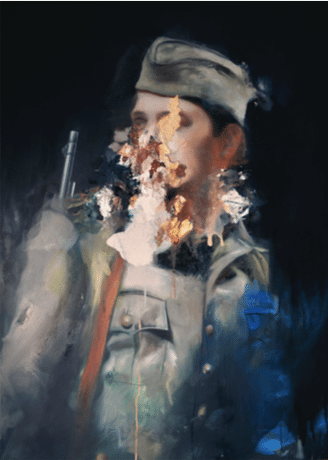Jesus Leguizamo
Jesus Leguizamo

Jesus Leguizamo is a figurative painter from Bogotà, Colombia who recently featured in Saatchi’s list of new and upcoming artists. His works are rich in detail and are incredibly tactile. They are portraits of vivid memories and abstract concepts including themes such as fatherhood, war and love. Sections of his paintings are intensely focused or canbe confused in a haze of passionate expression through colour and form.
Many today may disregard the value of paintings that delicately render our physical appearances in a world of camera technology and cheap means of reproduction. Everyday, millions of images of us go online on Instagram and Facebook. All of us share our experiences to preserve a moment in our lives in order to say, “Yes, this is me. I was here.”
However, painting in the realm of art has far more complexities in the way of attaining a multi-facetted essence of our existence. Throughout history we have always been drawn to images of human faces in the pursuit of stories they may tell. Personal histories and relationships are embedded in each brushstroke. Works like the paintings by Jesus Leguizamo are not simply faithful recreations or most detailed copies of how a person looks like. What is truly revealing is when we turn our attention to the information the artist chooses to omit,blur or distort and the reasons behind these decisions. It’s through these balances that we gain insight. The human sphere isn’t so stable as a photograph, nor are the ideas that define who we are.
The hand touching paintbrush on to canvas is the hand that presses the camera shutter. Two kinds of reality interpreted: a layered thoughtfulness as opposed to spontaneity as seen in nature. Both can be equally exciting but through contemporary figurative painting, we may be more fruitful in discovering interwoven dynamics of conscious and unconscious intentions within layers of paint.
To the viewer, Leguizamo communicates the mind’s eye. All surroundings are condensed to blocks of light or dark. Sometimes steams of light are permitted, or thick dabs of paint that recall violent emotional links. Actions are often concentrated on and our eyes are drawn to the way a scholar scratches his head in frustration or the lingering gaze of a soldier, dressed and ready to go into combat. We cannot read any other aspect of his expression or know with any clarity what he truly looks like. Striking impasto paint, fleshy tones of redand brown evoking images of healing wounds, obscure most of his face. Is this the echo of a loved one’s memory? Or does it foreshadow emotional and physical trauma to come? Where the photograph is a window to the eyes, the painting is a window to our inner selves.
Leguizamo’s work is so accessible because it gives us the thrill of uncovering clues to the human condition. From understanding others, we can begin to understand ourselves.
Words – Wingshan Smith
